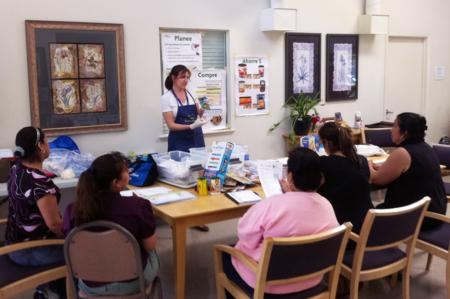
To supplement their food supply, Californians can turn to the CalFresh program, which was formerly known as food stamps. The federal program is called the Supplemental Nutrition Assistance Program, or SNAP.
To help CalFresh participants stretch their food dollars and maintain a nutritious diet, the University of California’s CalFresh Nutrition Education Program offers a series of four workshops called "Plan, Shop, Save and Cook." In a follow-up survey, UC Cooperative Extension advisors Dorothy Smith and Marcel Horowitz found that one-third of the 1,373 people who participated in the workshops said they weren’t running out of food by the end of the month as often.
In the first workshop, people learn the benefits of preparing a balanced meal plan. To do this, they discuss building meals around store specials, foods on-hand and leftovers, while including family favorites.
During the second workshop, participants read the nutrition labels on foods and learn how to make the best nutritional choices while shopping.
In the third workshop, UC CalFresh instructors show the participants how to determine the least expensive options for the items on their grocery list. For example, if buying beef, chuck roast is cheaper and contains less fat than sirloin. Unit pricing, bulk purchases, generic brands, convenience items, alternative protein sources and preventing spoilage and waste are things to consider when choosing food products.
During the final workshop, the participants prepare and taste dishes made with low-cost nutritious foods. They put their new knowledge into practice by creating a one-week meal plan.
In San Luis Obispo and Santa Barbara counties, UC CalFresh have teamed up with local food banks to encourage families to eat more fruits and vegetables. Using fresh produce from the food banks, UC CalFresh nutrition representatives prepared fruits and vegetables in healthful dishes, which were tasted by participating families.
UC CalFresh is showing Californians that nutritious and tasty meals don’t have to cost a lot.